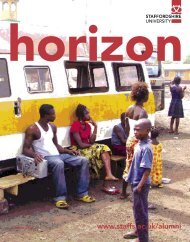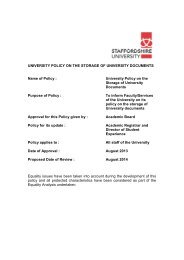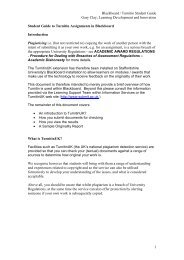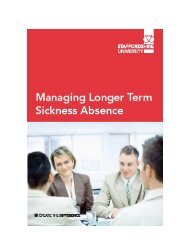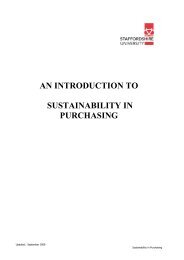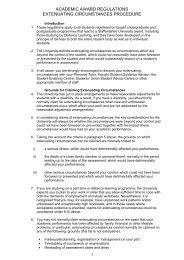knee joint moments and patellofemoral pain syndrome in runners part i
knee joint moments and patellofemoral pain syndrome in runners part i
knee joint moments and patellofemoral pain syndrome in runners part i
You also want an ePaper? Increase the reach of your titles
YUMPU automatically turns print PDFs into web optimized ePapers that Google loves.
Figure 1: Stance phase <strong>knee</strong> <strong>jo<strong>in</strong>t</strong> <strong>moments</strong> <strong>in</strong> the sagittal, frontal <strong>and</strong> transverse planes compar<strong>in</strong>g asymptomatic<br />
(n=20) to PFPS (n=20) <strong>runners</strong>, runn<strong>in</strong>g heel-toe, with a shoe, at 4.0 m/s.(CASE CONTROL Study Design)<br />
Figure 2: Stance phase <strong>knee</strong> <strong>jo<strong>in</strong>t</strong> <strong>moments</strong> <strong>in</strong> the sagittal, frontal <strong>and</strong> transverse planes compar<strong>in</strong>g asymptomatic<br />
(n=12) to PFPS (n=6) <strong>runners</strong>, runn<strong>in</strong>g heel-toe, with a shoe, at 4.0 m/s.(PROSPECTIVE Study Design)<br />
Knee Moment [Nm]<br />
study condition group n<br />
max extension (SD) p-value max abduction (SD) p-value max ext rotation (SD) p-value<br />
asymp 20 124.1 (47.5) -103.1 (35.6) 27.9 (16.2)<br />
case control shoe<br />
0.69 0.16 0.14<br />
pfps 20 129.1 (29.6) -127.3 (66.1) 35.8 (16.5)<br />
asymp 12 132.1 (31.2) -49.9 (33.6) 12.9 (10.2)<br />
shoe<br />
0.05<br />
0.16<br />
0.12<br />
pfps 6 101.7 (18.8) -74.7 (29.2) 21.5 (10.5)<br />
prospective<br />
asymp 12 128.9 (33.0) -45.5 (31.2) 11.8 (7.8)<br />
barefoot<br />
0.03 *<br />
0.08<br />
0.03 *<br />
pfps 6 94.6 (16.1) -75.2 (27.0) 22.4 (10.2)<br />
Table 1: Comparison of average maximal <strong>knee</strong> <strong>moments</strong> <strong>and</strong> st<strong>and</strong>ard deviations <strong>in</strong> the sagittal, frontal <strong>and</strong> transverse<br />
planes for both study designs. Only shoe runn<strong>in</strong>g was collected for the Case Control Study.<br />
condition variable [unit] sub 1 sub 2 sub 3 sub 4 sub 5 sub 6<br />
∆ (max extension moment) % -25.5 -23.8 -3.9 -18.5 -19.1 -47.5<br />
shoe ∆ (max abduction moment) % 139.9 21.2 72.7 -48.1 73.8 38.6<br />
∆ (max external rot moment) % 176.2 -14.0 96.9 -57.5 81.4 119.2<br />
∆ (max extension moment) % -35.6 -27.5 -2.6 -32.0 -35.9 -25.8<br />
barefoot ∆ (max abduction moment) % 165.1 81.5 89.4 -21.3 54.3 22.4<br />
∆ (max external rot moment) % 239.7 74.5 129.2 -13.7 74.2 34.1<br />
Table 2: Individual subject values for the Prospective Study. Values shown are differences <strong>in</strong> % from the average of the<br />
asymptomatic group. A positive value <strong>in</strong>dicates a higher moment compared to the asymptomatic average.<br />
DISCUSSION<br />
Increased <strong>knee</strong> <strong>jo<strong>in</strong>t</strong> load<strong>in</strong>g <strong>in</strong> the frontal (ab-adduction <strong>moments</strong>) <strong>and</strong> transverse<br />
(external-<strong>in</strong>ternal rotation <strong>moments</strong>) planes may lead to <strong>in</strong>creased stresses with<strong>in</strong> or around<br />
the <strong>patellofemoral</strong> <strong>jo<strong>in</strong>t</strong> <strong>and</strong> thus lead<strong>in</strong>g to <strong>pa<strong>in</strong></strong>. Both maximal abduction <strong>and</strong> maximal<br />
external rotation <strong>knee</strong> <strong>moments</strong> were approximately 20% higher for the <strong>in</strong>jured <strong>runners</strong> <strong>in</strong><br />
the case control study. No statistical differences were seen. Results of the prospective<br />
study showed a similar trend. These differences became statistically significant for the<br />
external rotation moment when look<strong>in</strong>g at barefoot runn<strong>in</strong>g. More importantly, the PFPS<br />
group had a 65% higher maximal <strong>knee</strong> abduction moment <strong>and</strong> a 90% higher maximal<br />
external <strong>knee</strong> rotation moment. For the prospective study, <strong>in</strong>dividual differences revealed<br />
that 5 of the 6 <strong>in</strong>jured subjects had a 30% or greater value for the abduction <strong>and</strong> external<br />
rotation moment for barefoot runn<strong>in</strong>g. This pattern was also evident for 8 of the 20 <strong>in</strong>jured<br />
subjects <strong>in</strong> the Case Control study. There is a strong possibility that <strong>in</strong>creased <strong>knee</strong> <strong>jo<strong>in</strong>t</strong><br />
<strong>moments</strong> are contribut<strong>in</strong>g factors lead<strong>in</strong>g to the onset of PFPS <strong>in</strong> <strong>runners</strong>.<br />
REFERENCES<br />
1. Clement, D.B. et al. Phys & Spts Med 9(5): 47-58, 1981.<br />
2. James, S.L. et al. Amer J Spts Med 6(2): 40-49, 1978.<br />
3. Nigg, B.M. et al. J Biomech 26(8): 909-916, 1993.<br />
4. Messier, S.P. et al. Med Sci Spts Exec 23(9): 1008-1015, 1991.<br />
5. Van Mechelen, W. Sports Med 19(3): 161-165, 1995.



